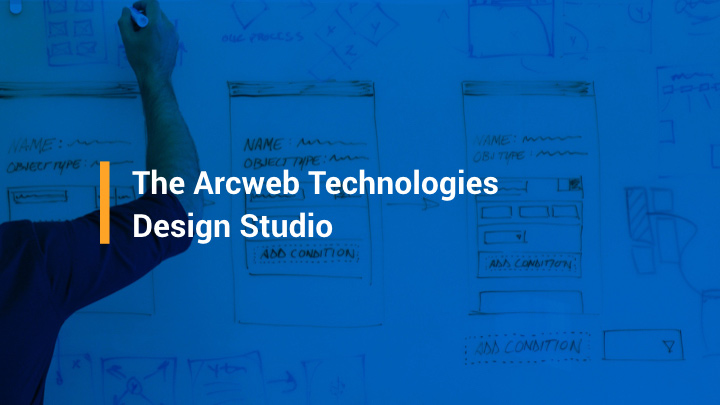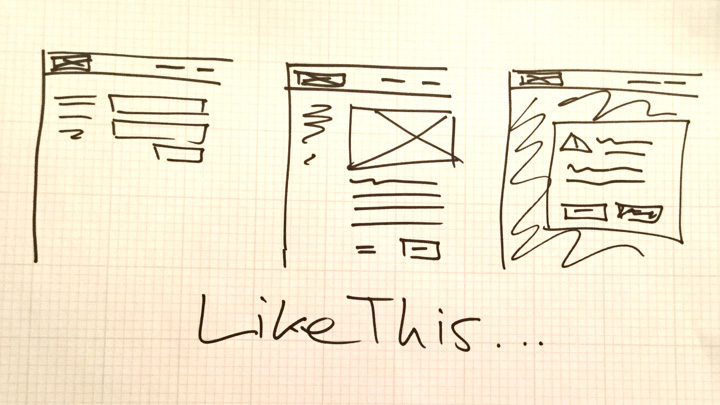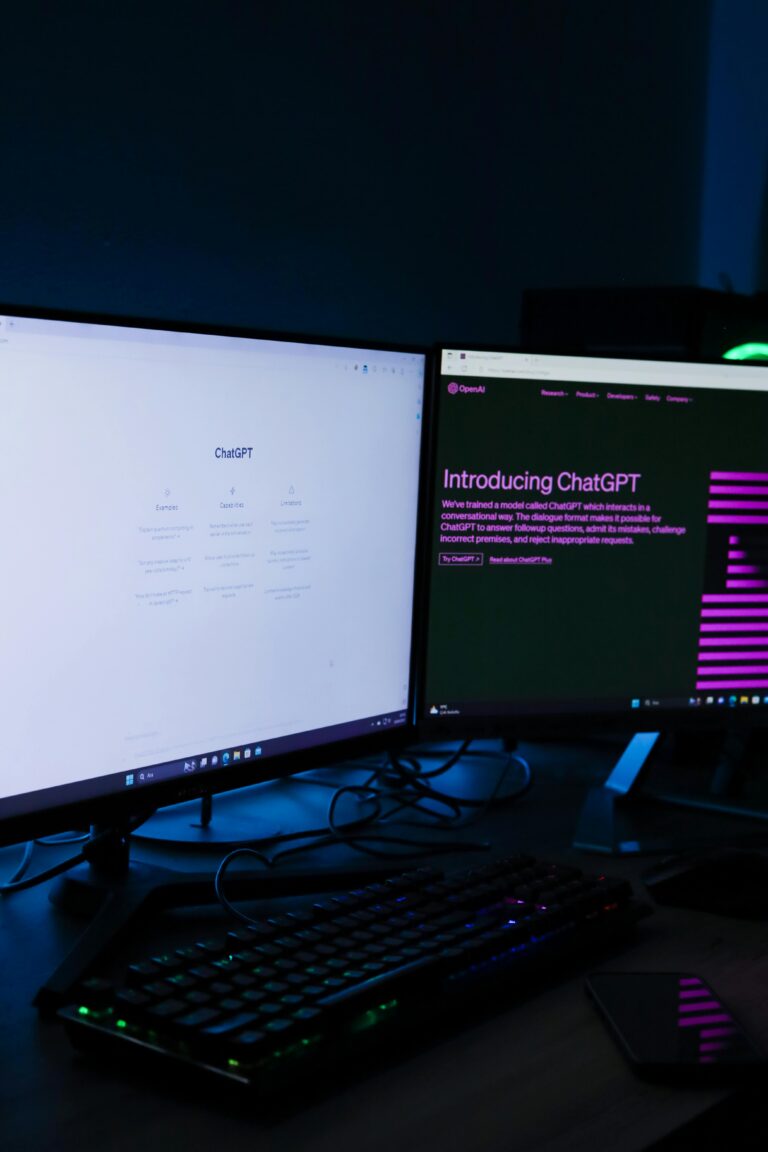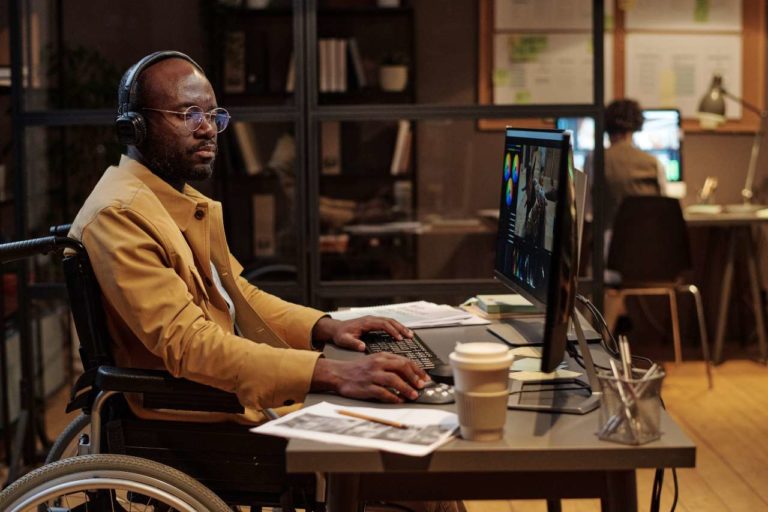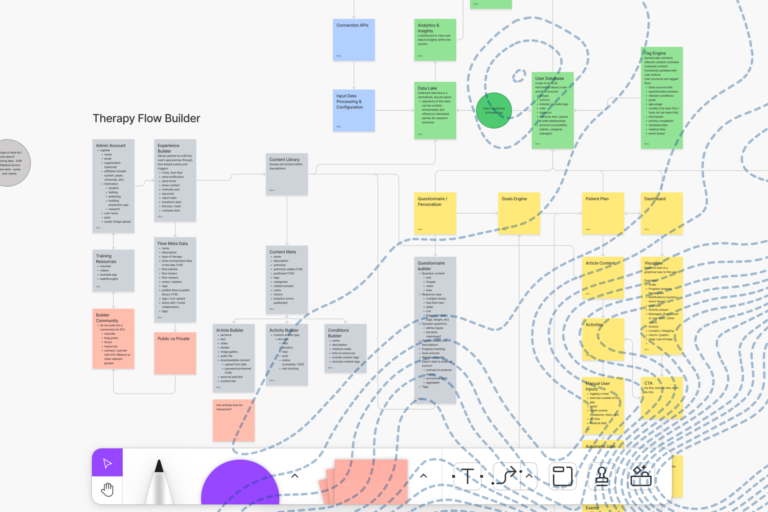It takes a village to make a great digital product. Here’s how we do it at Arcweb Technologies.
This post is an adaptation of the talk I gave at Tech2Gether in November of 2015. You can read what Technical.ly said about it here.
You’ve all heard the phrase “Software is eating the world,” right? I find that a weird way to look at things, but it’s still an interesting point. Everywhere you look, there’s a new previously dumb device adding software to stay competitive. There’s even a connected egg tray that sits in your fridge now and tells your smartphone when your eggs might go bad. What a time to be alive, right?
But the one thing you’ll notice, is that if software is in fact eating the world, design is leading the way.
You can’t pick up a business mag these days without finding a feature article on design. The richest company in the world right now got there largely because of design. And, I have personally dealt with several large engineering-driven product companies that are working to become more design-driven, because that’s where the market is headed. Huge, well-funded companies are realizing that without design, they’re dead.
Well, I’m a designer by trade, and to me, and all the other designers in the room, I bet that sounds great, right? Right?
Not so fast.
I want to let you all in on a little secret.
Don’t tell anyone I told you this, ok? Here it is:
Design is too important to be left to designers.
Huh?
Design is Too Important to be Left to Designers
Ok, now I have the attention of all the designers in the room, because they’re mad. And rightfully so, because it sounds like I just said your job is too much for you. Hold up. What does that mean?
Well, actually…
Today’s digital products are just so complex. Really, to land with any sort of traction in the marketplace, you probably have to launch on iOS, on Android, and on the web, for starters. Which means there’s a cloud component. You have to know what’s out there in the market. You need to have someone calling the shots from a product perspective. There’s a lot that goes into what we call user experience design these days… and that’s before we even get to the actual users!
So, really, we’re actually talking about something that’s a little different than what those who attended art school would call “design.”
Building a digital product?
We, as user experience designers, have to adjust the way we think about our roles. Sure, there’s a lot of “designing” that still has to happen. But today’s UX or product designer spends a lot less time pixel pushing and more time as the steward of the design process.
UX Design as Stewardship
A UX designer’s role, today and going forward, whether you know it or not, is to create the best possible experience for your users. Full stop. Doesn’t matter where it comes from. Doesn’t matter how you get there, really. You’re not a ninja or rockstar, who comes down from on high and blesses the masses with your talents. You’re a steward, and you’re a part of a team.
So, how do you pivot from being a pixel pusher to a design steward? Here’s how we do it at Arcweb Technologies.
The Arcweb Technologies Design Studio
We do Design Studio. Design Studio isn’t a place; it’s a methodology. It’s not a proprietary thing, or even a new idea. You can start doing this tomorrow if you like. Hey, we’ll be happy to (conduct a workshop) with your company or startup to show you how (hint hint). So what is it?
Design Studio is a methodology we use to create digital products people love. There are three core ideas behind it:
1. It’s collaborative. We get as many people as possible involved as early as possible.
2. It’s cross-disciplinary. Design Studio participants are not just designers. I know, right? But that’s the point. To create truly great digital products, we need everyone’s input. That means product managers, engineers, architects, QA folks, product owners, marketing, whoever. Everyone’s got a valid opinion to bring, and we want to collect them all.
3. It’s participatory. We don’t only talk about design. We do design in design studio. And how do we do that?
Sketching
We sketch. Relentlessly. Sketches are the coin of the realm in design studio. Without a sketch, an idea is just words. It’s not concrete. It’s ephemeral. It’s much harder to react to. I can’t circle the part of your voice that isn’t working, or highlight the part that is, right? Plus, sketching isn’t Photoshop. It isn’t Sublime Text. It isn’t Powerpoint. No one’s in their comfort zone, using their preferred tool. We’re all on equal footing.
Before we go much further, I can hear what some of you are thinking…
“But I can’t draw!”
I want to let you in on another little secret: I can’t draw, either. Seriously. It’s really bad. I didn’t go to art school. But I’ll tell you what I sure as hell can do: I can sketch well enough to communicate a design idea, pitch it to someone and get their buy-in. That’s all we’re trying to do here. Sketching isn’t drawing. There’s no aesthetic goal for sketching.
Let me repeat that: Sketching isn’t drawing. Here, look:
These are the kinds of sketches we’re looking for. Juuuuuuust enough detail to convey your idea. That’s a login page, there’s kind of a landing page, and that’s a modal overlay. That took me maybe 20 seconds. That’s all you need.
This is what we mean when we say Design Studio is participatory. Everyone in the room picks up a sharpie and sketches. If you’re not sketching, you’re not in the room. We’re all in this together, people. Besides, if you’ve been invited to our design studio, it’s not necessarily because I like you or want to hang out or whatever, it’s because I need your ideas. So. Everyone participates. This is non-negotiable.
How to Design Studio
So, how do you “do” design studio? It’s a four step process.
Define
Defining the problem you hope your Design Studio will solve is the first, often overlooked and maybe most important step. Of course, it’s good to know what you’re trying to accomplish with a given design, but it’s great to know this cold up-front, because by defining the problem up front, you have a framework for evaluating a design’s effectiveness later, so you don’t have to resort to “I like it, just because.” (More on feedback in a minute.) It’s also helpful to have your personas in place. These are mini-dossiers about your users, and what they’re trying to accomplish by using your software.
Create
Now, we create. But we do this in a very prescribed, constrained manner. We take grid paper and Sharpies and everyone in the room sketches 6–8 ways to solve the problem for the given persona in 5 minutes.
That’s a lot to unpack, and there’s a reason for each of these constraints.
Why graph paper? Because there’s enough uncertainty and uncomfortableness around this process, that we want to give people some framework to feel comfortable it. Most software is made of straight lines, and the graph paper helps us remember this.
Why Sharpies? Sharpies are fat and indelible. You can’t spend too much time on detail with a sharpie, and you can’t go back and erase.
Why 6–8 sketches? Because that’s a lot, and we want to keep your hand moving, not thinking. We want you to silence your internal critic and help you focus on getting the idea on paper.
Why 5 minutes? Because you can accomplish a lot more than you think in 5 minutes.
Pitch
So once we’re done the five minute sketch session, we pitch our sketches to each other. Pitching is where the magic happens. Everyone grabs some painters tape and tapes their sketches up onto the wall. Then, you get a minute to pitch. What were you hoping to accomplish with your sketches? Why did you go this route? What assumptions did you make?
Critique
Once everyone has pitched, we enter the critiquing stage of design studio. This is where the definition of the problem I discussed earlier become so important. That gives you an agreed-upon framework for discussing ideas. It allows you to say “This works for our target user because… ” rather than “I like this.” Such a simple turn of a phrase, but so powerful. Once we take our feelings out of the equation, it becomes so much easier to give and receive honest, helpful feedback.
After the pitch and critique, everyone gets three glue dots to tag the sketches they think are most effectively solving the problem. They can put all three on one sketch if they really love it. They can tag their own. The only rule is, three dots per person. The sketch with the most dots gives the group direction on where to go next.
Lather, Rinse, Repeat
So, once you’ve gone through one iteration, you can pick a new feature, define it, sketch it, pitch it, and critique it. Or, you can pick a direction that your team seemed to favor in the first round and dive deeper into it. It’s up to you and your team.
Why Design Studio?
So, now that we’ve discussed what Design Studio is and isn’t, why do we like it so much?
Requirements
It’s great for requirements gathering: in the Define stage, we can learn everyone’s opinions on what “needs” to be in the product for a 1.0 version.
Prioritization
By seeing where everyone leans in the sketching phase, we can get a real sense of where things fall on the must have/nice to have/someday spectrum.
Idea Generation
There is no better way to generate lots of different ideas than a Design Studio. None. This makes Design Studio great for any stage in the product development lifecycle: when you’re starting out on a project, or even when you’re stuck on a particular feature, or any time in between.
Consensus Building
One of my favorite outcomes of a good design studio is consensus building. Because you have all the stakeholders in the room, and everyone was a part of the ideation and pitching and critiquing, people feel more involved. They feel like they’ve been heard. Plus, you walk out of a design studio with pre-vetted ideas. Everyone participated in coming up with them. They belong to the group. You don’t have designers saying “I wish I had been invited to an earlier meeting” or engineers saying “There’s no way we can do that” or product owners saying “Why am I seeing this for the first time?”
Speed
I’ve seen and anecdotally heard about teams that implement some kind of Design Studio shaving weeks, even months off of a project’s timeline. It eliminates the back-and-forth nature of a lot of product engagements.
Empathy
But here’s the real kicker. After going through a design studio with a team, you can’t help but respect and empathize with your team more.
A Design Studio can honestly be a bit of a stressful situation. No one’s totally comfortable, and everyone’s on the line to pitch and defend their ideas. That builds a team sometimes. Hearing people explain their ideas and defend them in a controlled environment helps you gain insight into them. Your engineers start to understand that designers don’t just suggest things to make their lives difficult. Designers understand that engineers don’t say no “just because.”
This benefit carries through long after the Design Studio session is complete. And, while we’ve seen better products come out of our sessions, the real deliverable of a good Design Studio is better teams.
Your Homework
I have a homework assignment for you. Take your next feature and run it through a Design Studio. Doesn’t matter how small. You can do it in as little as 90 minutes if that’s all you have, but any time you spend will be well worth it. And if you’d like me to come discuss how to do this in more detail, here’s how to get in touch.
Thank you all so much, and happy sketching!

